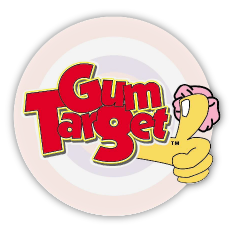Unlike most other waste, chewing gum isn’t biodegradable. Thanks to its synthetic base, similar to plastic, gum doesn’t break down over time, making it a persistent pollutant. It’s a sticky nightmare, clinging to surfaces and requiring special cleaning techniques to remove, which can be costly for municipalities and businesses alike.
 Best Practices for Consumers to Minimize Gum Litter
Best Practices for Consumers to Minimize Gum Litter
The foremost principle in preventing gum litter begins with the conscientious disposal of gum. Always ensure to dispose of your gum in a garbage bin. It is advisable to wrap it in a piece of paper, which could be the gum’s original wrapper, a napkin, or any scrap paper. This encapsulates gum, reducing its environmental footprint.
There may be instances where a garbage bin is not immediately accessible. In such situations, planning becomes invaluable. Carrying a small, sealable bag or container with you as part of your daily essentials can provide a temporary storage solution for your used gum until you find a proper disposal site. This measure prevents the temptation to discard the gum improperly.
By consistently demonstrating responsible gum disposal, you inspire others to follow suit. This ripple effect amplifies the impact of your actions, fostering a culture of mindfulness and respect for public spaces.
Another effective strategy to minimize gum litter involves advocating for more accessible disposal options in your community. Engage with local businesses and public institutions to suggest the placement of additional garbage bins in strategic locations, such as near entrances, exits, and high foot traffic areas. Increased access to disposal options makes it easier for everyone to discard gum responsibly.
Participate in and promote educational efforts aimed at raising awareness about the environmental impact of gum litter. Sharing information through social media, participating in community clean-up events, and supporting campaigns focused on litter reduction are all valuable ways to contribute.
For Businesses
One of the most straightforward yet impactful actions a business can take is ensuring that customers and employees have easy access to bins for waste disposal. Strategic placement of trash cans and recycling bins near entrances exits, and high-traffic areas can significantly decrease the likelihood of gum litter. Businesses might consider installing specialized gum disposal containers or signage directing individuals to the nearest disposal points, thereby minimizing inconvenience and encouraging proper gum disposal.
Innovative approaches to gum disposal, such as providing gum disposal wrappers or pads, can serve as an effective deterrent against litter. These can be branded with the business’s logo, serving as a unique marketing opportunity. By offering a tangible solution at the point of sale or within the premises, businesses can directly influence the disposal behavior of their patrons positively.
Businesses educate the public about the environmental impact of gum litter through in-store signage, packaging, and digital platforms. Communicating the importance of responsible gum disposal and the steps the business is taking to facilitate this can motivate customers to align their actions with these values. Informational campaigns can be as simple as a poster next to a trash can or as elaborate as a dedicated social media campaign.
By collaborating with local governments, environmental organizations, and community groups, businesses can amplify their impact. Participating in or sponsoring clean-up initiatives, public awareness campaigns, or city beautification projects demonstrates a commitment to the community’s well-being and encourages a collaborative approach to tackling gum litter.
Businesses can demonstrate their commitment to reducing gum litter through their corporate policies and practices. This could include maintaining a clean exterior, training staff on how to deal with gum litter appropriately, and adopting sustainable practices wherever possible. By embodying the change they wish to see, businesses set a powerful example for others to follow, proving that environmental responsibility and commercial success can go hand in hand.
How Cities Can Lead the Charge in Gum Litter Prevention
Cities can take a stance by increasing the availability and visibility of trash bins and designated gum disposal units across public areas, such as parks, sidewalks, transit stations, and commercial districts. Regular maintenance and marked signage can further reinforce their use, ensuring that disposing of gum correctly is both convenient and instinctive for residents and visitors alike.
Utilizing equipment designed to remove gum from surfaces can help maintain the cleanliness of public spaces. Periodic cleaning signals to the public that the city places a high value on cleanliness, which can, in turn, encourage more mindful disposal practices.
Cities have the platform to launch comprehensive awareness campaigns that highlight the environmental and economic repercussions of gum litter. These campaigns can take various forms, including public service announcements, educational programs in schools, and interactive public installations that engage the community. By informing citizens of the impact of their actions and offering practical prevention advice, cities can foster a culture of responsibility and respect for public spaces.
Some cities have experimented with installing gum-targeted disposal bins or boards where people can dispose of their gum in a fun and engaging manner. These initiatives engage the public’s imagination and encourage participation in maintaining clean public areas. Such creative approaches can make the act of responsible disposal more appealing and socially endorsed.
Cities may consider implementing or reinforcing fines specifically for gum littering, framed within a broader context of maintaining public cleanliness. Such measures must be accompanied by public education and sufficient disposal infrastructure to ensure fairness and effectiveness.
Manufacturers have a responsibility to contribute to the solution as well. Developing biodegradable gum options, minimizing packaging waste, and actively participating in public education efforts are all steps in the right direction. Some brands have even taken the initiative to fund local cleanup projects or produce creative advertising campaigns aimed at discouraging littering.



